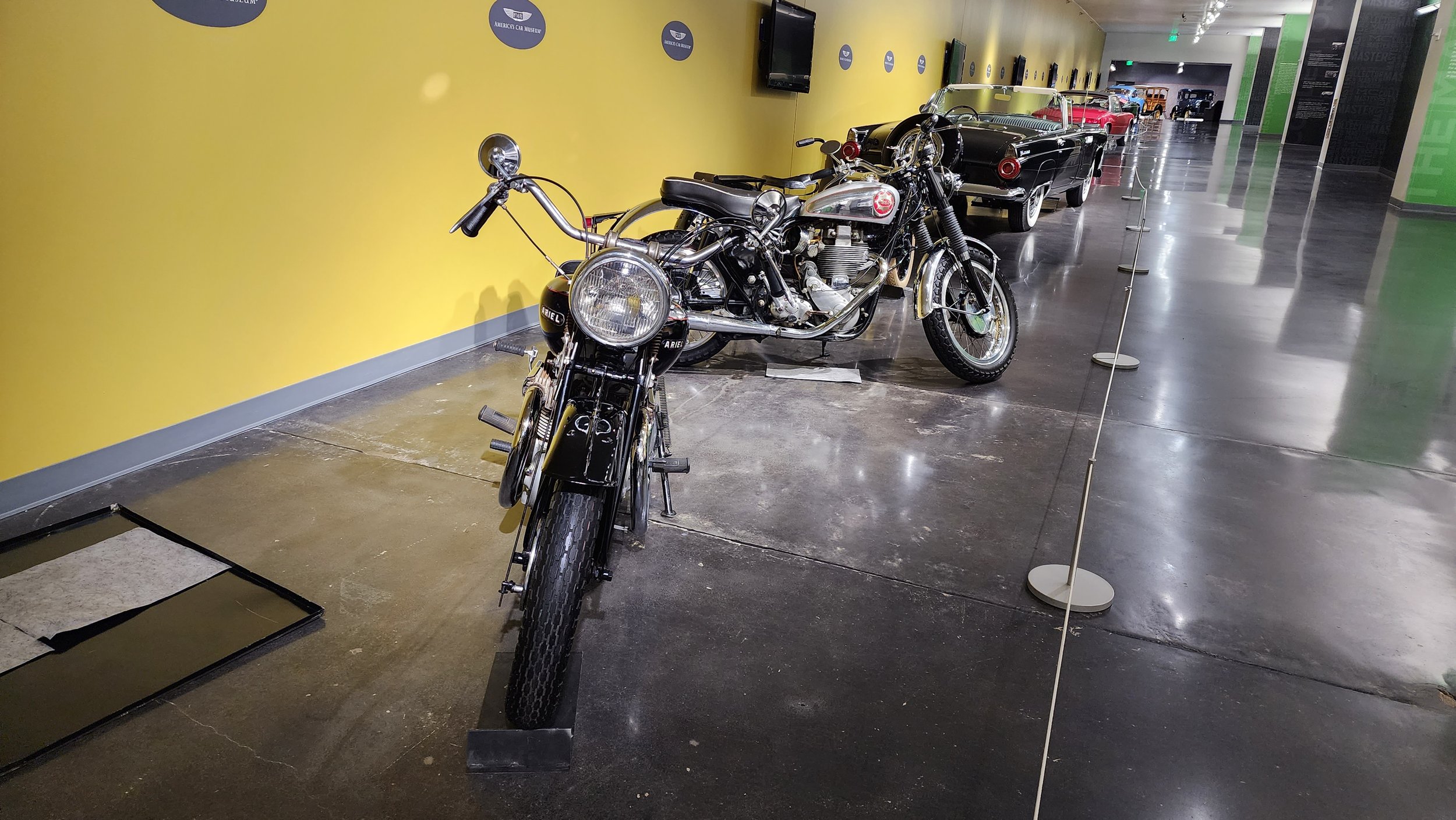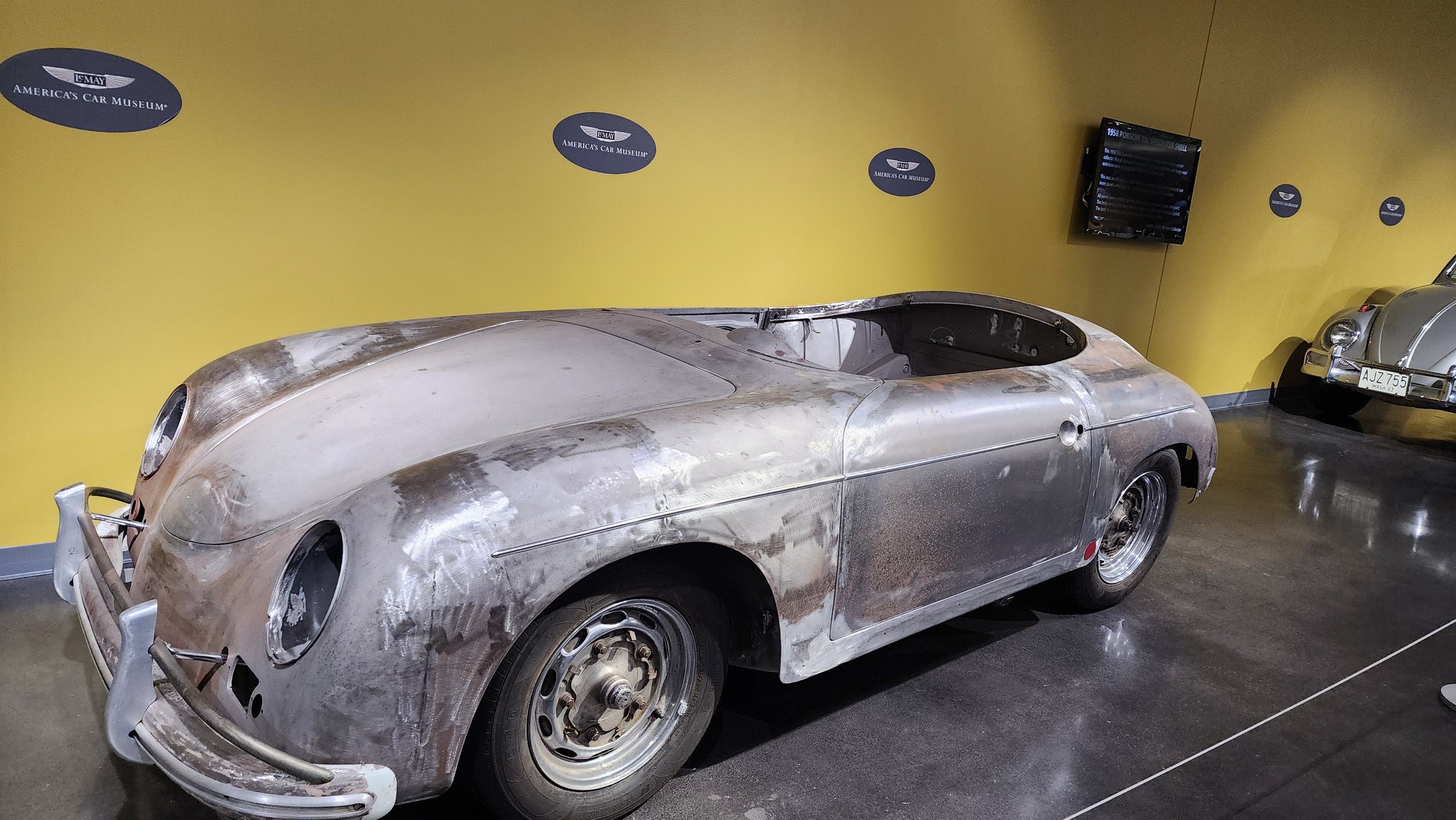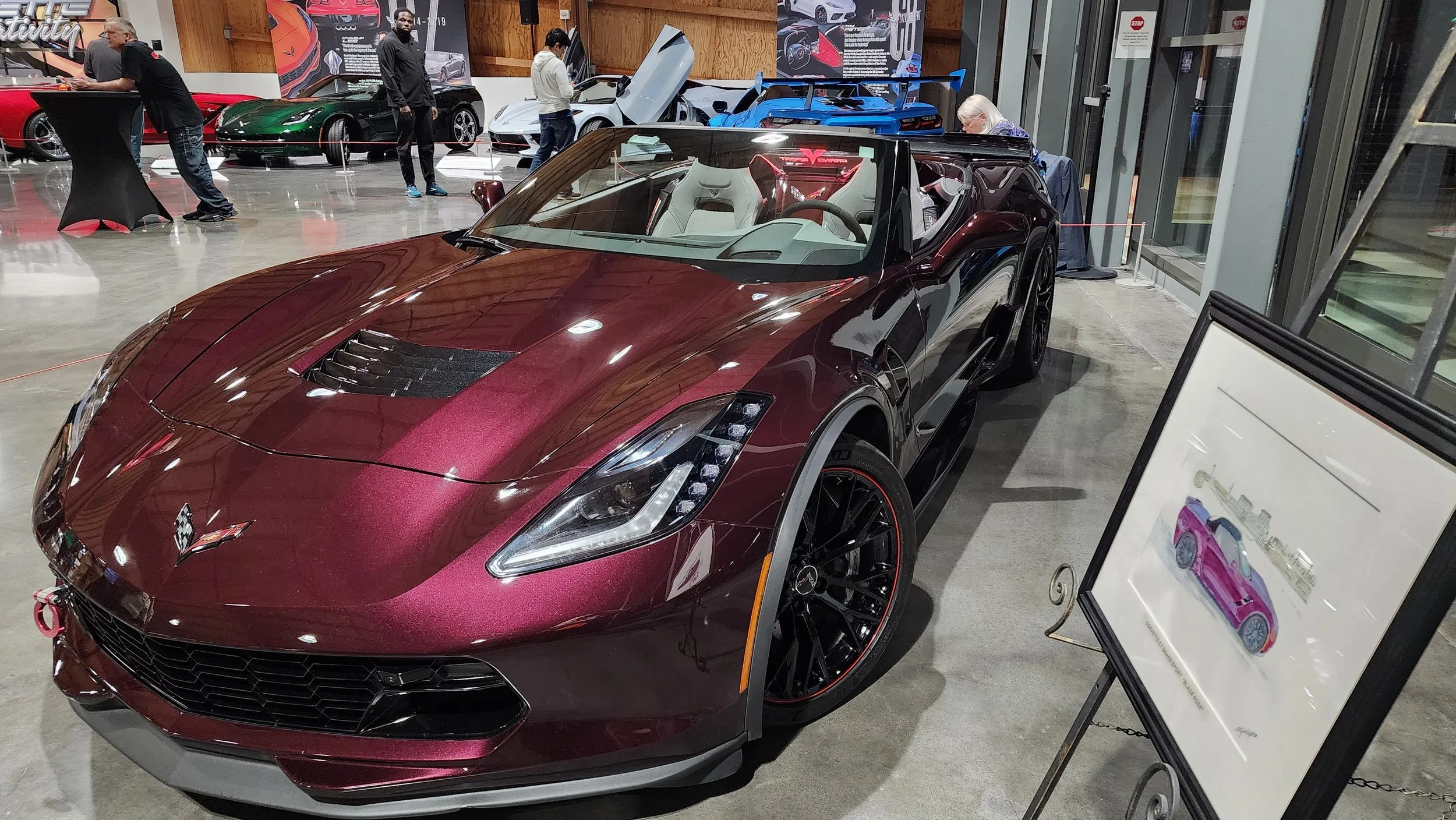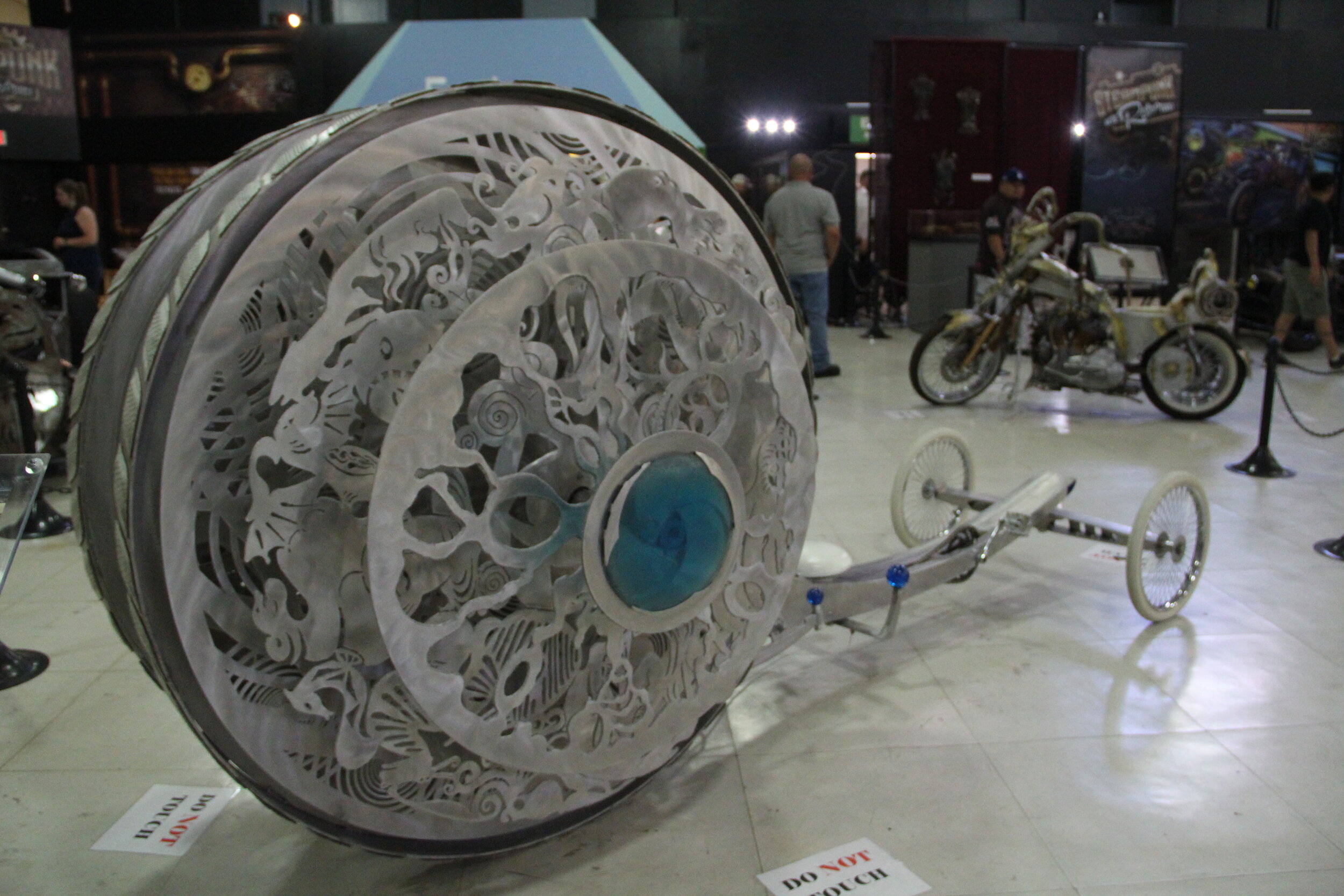Museum Curation & Exhibits
Exhibition & Collection Excellence:
LeMay America’s Car Museum
As Curator of Exhibitions and Collections at LeMay, America’s Car Museum, my responsibilities encompassed maintaining the condition and preparedness of the museum’s collection of over 250 antique, classic, and modern vehicles and preparing exhibitions. I conceptualized and executed exhibitions that showcased the museum’s collection as well as innovative themed exhibitions designed to enhance visitor experiences.
Community engagement played a crucial role in supporting content related to both the Pacific Northwest and automotive heritage at large. By collaborating with collectors and embracing local car cultures, I successfully minimized transport and operational expenses, enabling us to deliver exhibitions under budget. This approach garnered enthusiastic support from local cultural institutions and fostered a loyal local repeat visitor base.
Shinka:
The Japanese
Evolution Revolution.
Shinka: Evolution Revolution, An Immersive Automobile Exhibition.
Tracing the evolution of Japanese Automotive development from its origins in domestic production to its emergence onto the world stage, Shinka illustrates why Japan became the leading automotive producer in the world. Overcoming the challenges of rebuilding after World War II, Japanese automakers created fuel-efficient vehicles that gained prominence during the oil crisis of the 1970s, showcasing their dedication to quality and precision.
From having to emerge from destroyed infrastructure to creating fuel efficient dynamos which overtook the automotive industry in the 70s due to the oil crisis to creating street super cars, Japan’s versatile car companies showed dedication to quality and precision. Japanese cars further gained popularity through their portrayal in pop culture, in movie franchises such as Fast n Furious, and the anime phenomenon Initial D, solidifying their place in the public consciousness.
Shinka offers immersive settings and elements including sound, visuals, artwork, and cultural artifacts to create an engaging experience that highlights the rich diversity of Japanese vehicles. The exhibition showcases the evolutionary journey of Japanese automobiles, from iconic models such as the Hakosuka Nissan Skyline, originally part of the Japanese Domestic Market (JDM), to global sensations like the Honda Civic and the Toyota Supra. It also features legendary supercars like the Toyota 2000GT and the Acura NSX.
In addition to those renowned vehicles, the exhibition highlights international icons like the Datsun Fairlady Z/240Z, capturing the essence of Japanese car culture. It also explores current trends such as drift racing, rally racing, tuner modifications, the distinctive style of bosozoku, and the unique aesthetic of Liberty Walk and Rocket Bunny custom kits.
March
2024
Small Cars, Big Ideas.
Small Cars, Big Ideas shines a spotlight on the fascinating history of micro cars, showcasing human ingenuity in personal transportation with a focus on maximizing fuel efficiency. This collection features vehicles from various continents, inviting visitors to explore the unique designs of these miniature marvels. Many of these cars were born out of necessity during times of fuel rationing. Among the highlights are the Messerschmitt Kabinroller from Germany, the iconic Fiat from Italy, the U.S. Crosleys including the Hotshot and the Skorpion models, the American Bantam, the Italian Isetta, and modern micro car iterations such as the Smart Car. Each vehicle celebrates the innovation and creativity that have defined this distinctive automotive niche.
December
2023
Master Collector:
Denny Aker
Dedicated to local Porsche expert Denny Aker, a lifelong Porsche enthusiast and collector, this exhibition showcases his love for the brand, particularly the 356 models. It features several 356 models including a highly sought after twin grille 356 B D’leteren as well as a 1963 Beetle custom with a turbo 4-cam Porsche engine, along with a number of rare motorcycles and bicycles. It highlighted his 60-year career in restoring, modifying, and collecting Porsches and his love for both two and four-wheel vehicles.
August
2023
Corvette Creativity
Focusing on the evolution of the Corvette, America’s iconic sports car, this exhibition traced its development from its inception in 1953 to the present day, celebrating the ingenuity of Chevrolet engineers and designers across each generation. It highlighted pioneers such as the maverick engineer, Zora Arkus Duntoff, and the visionary leadership of VP of Global design, Ed Welburn, as well as local customizers who challenged the status quo, pushing the boundaries of performance and body customization. The exhibition showcased both production models and custom creations, such as the modified 1962 Seattle World’s Fair C1 Corvette or the 1999 modified C5 LeMans race car. This contrast stimulated discussion about the value of stock versus modified versions of the revered marque.
October
2023
Porsche 75
This exhibition commemorated Porsche’s heritage and influence on the automotive industry. Featuring a diverse collection of rare Porsches, ranging from the ultra rare 917 Le Mans race car and 356 speedsters, to lesser known models like the 914 and the 924, as well as intriguing items like a Porsche Jr. tractor and off road Dakkar and Safari models. By providing an inclusive selection of vehicles to celebrate the brand, Porsche 75 allowed visitors to both reminisce and dream of owning these legendary vehicles.
February
2023
~The Love of Learning and Experience~
San Diego Automotive Museum
San Diego Automotive Museum Curator & Education Director
From 2014 to 2021, performed all aspects of exhibit ideation, design, sourcing, and curation for the San Diego Automotive Museum. I leveraged my passion and knowledge of automotive culture and history to create interesting exhibits which drove an increase in museum traffic by 15-20% per month. Resourcefully utilized networks and community development to source donated vehicles and artifacts for exhibits while remaining far under the museum’s limited publicly-funded budget. To see additional images of exhibits use the navigation arrows on the middle side edges of the images.
Balboa Park Centennial: 1915 and 1935 Expositions
The first Balboa Park Centennial exhibit was centered around the cultural hub of San Diego: Balboa Park. Balboa Park contains over seventeen cultural organizations and museums. Using a variety of iconic vehicles used during the 1900s and 1930s, the exhibit highlighted the many advances made in technology and in society during the area’s world exposition years, between 1915 and 1935. During this timeframe, major events helped mold the area into the lively San Diego we know today. Ten tons of dynamite were used to blast 100,000 holes in the super-compacted soil, transforming 1,400 acres of barren, treeless wasteland into a stunning oasis of greenery. Then, the city’s economy was revived by the 3.5 million visitors who flocked to the city to celebrate the opening of the new, marvelous Panama Canal in the 1915 exposition. The 1935 exposition attracted even more visitors with a whopping 7 million new tourists, revitalizing the city during the Great Depression.




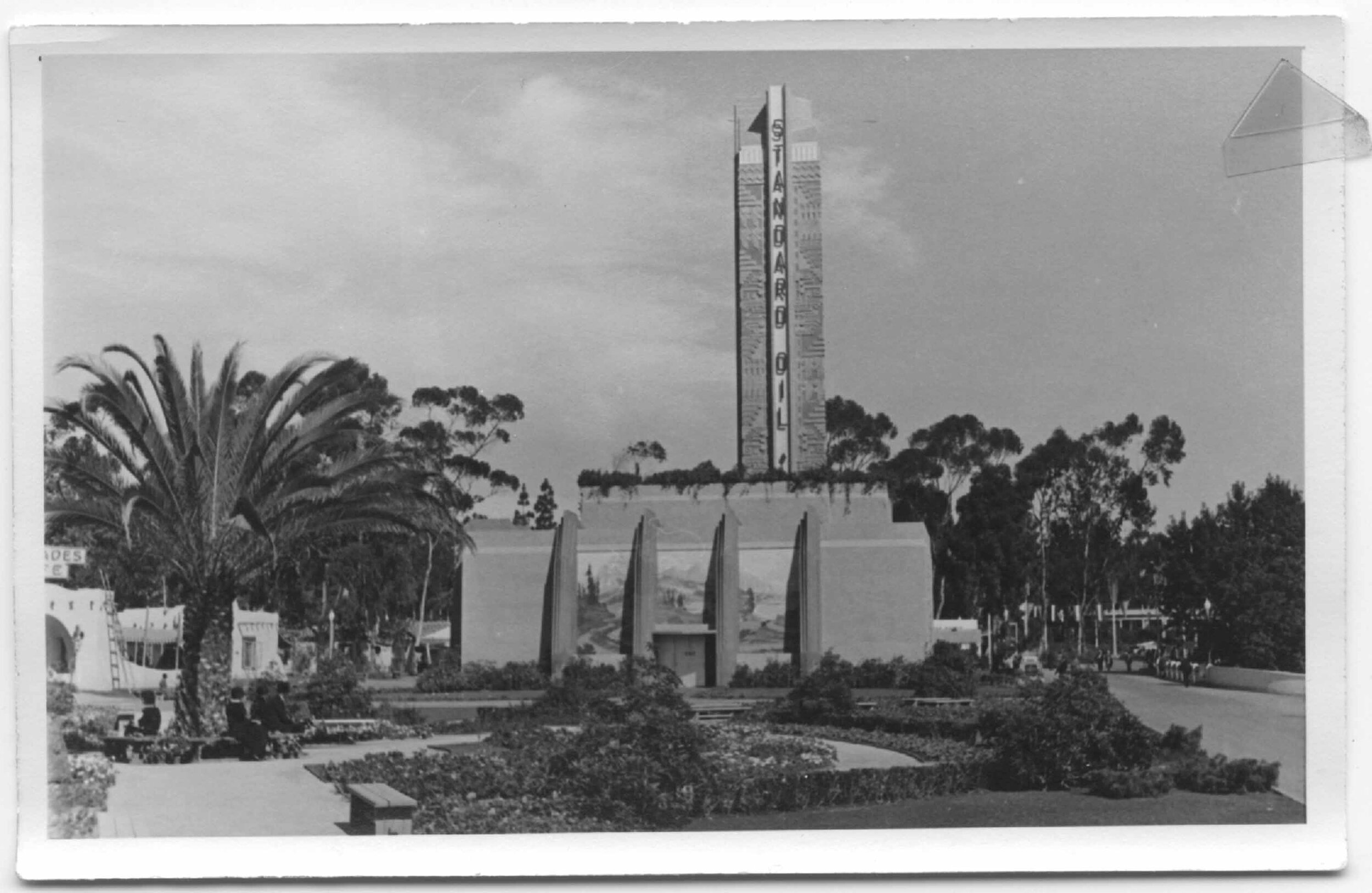
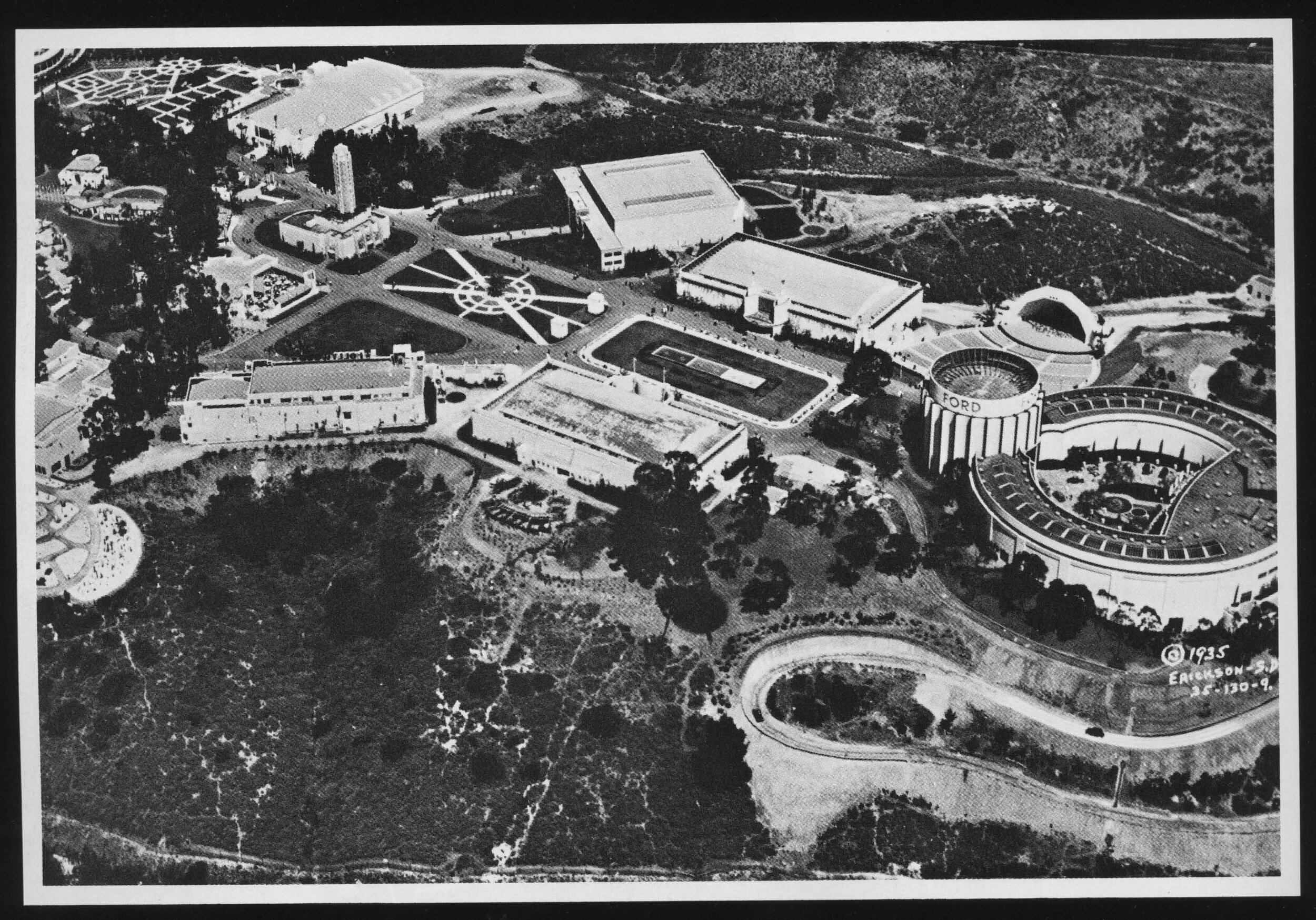
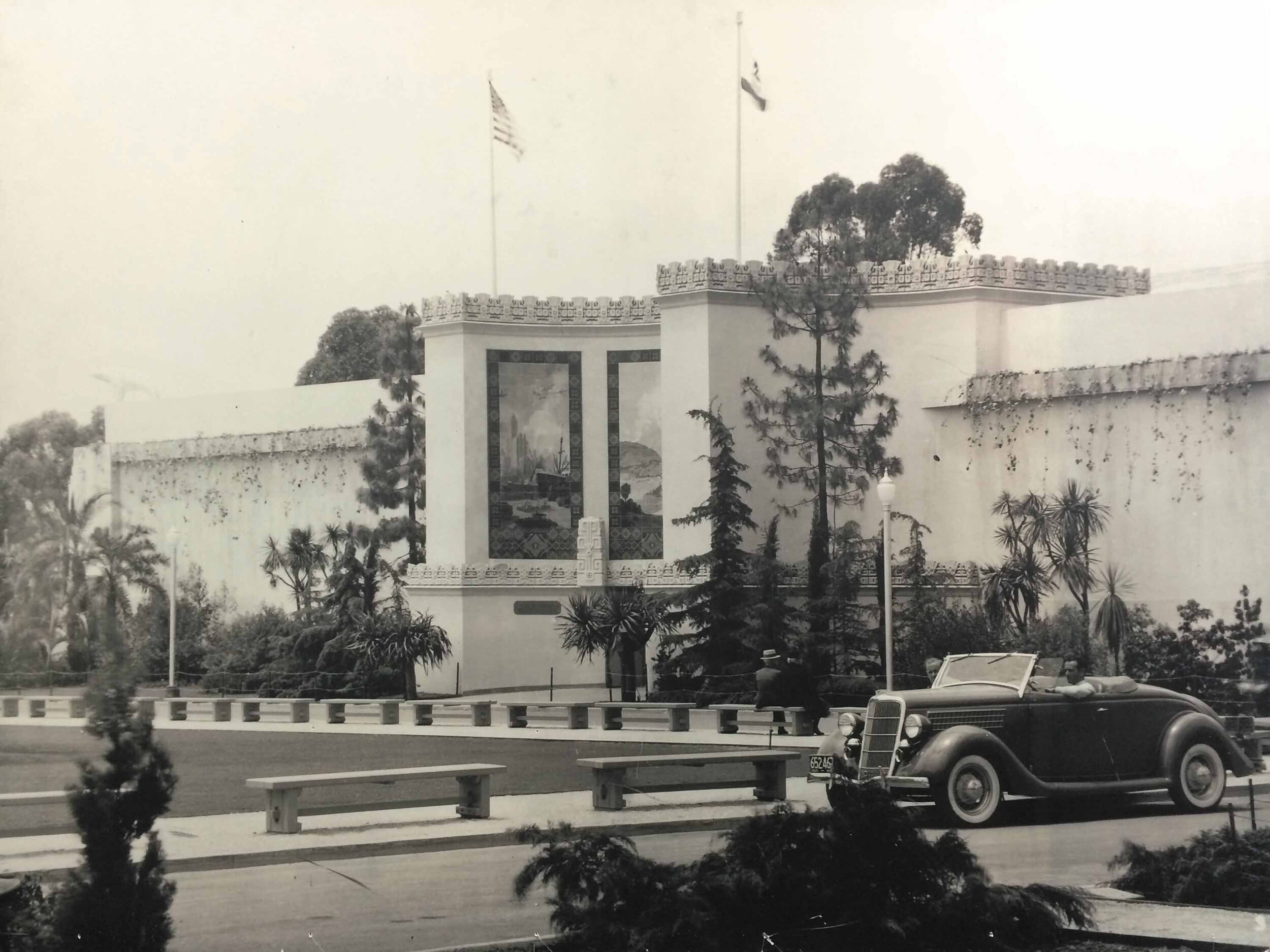





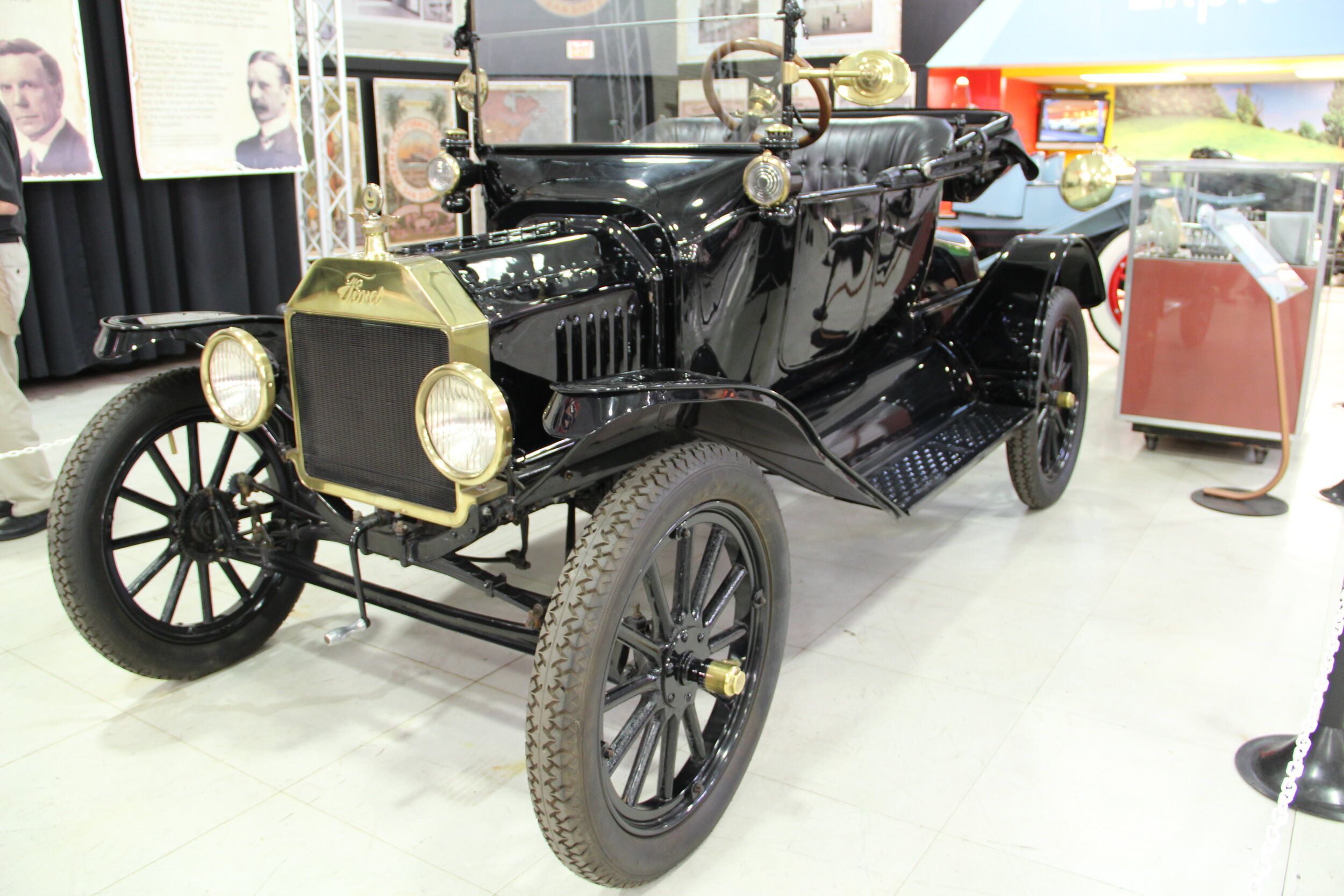




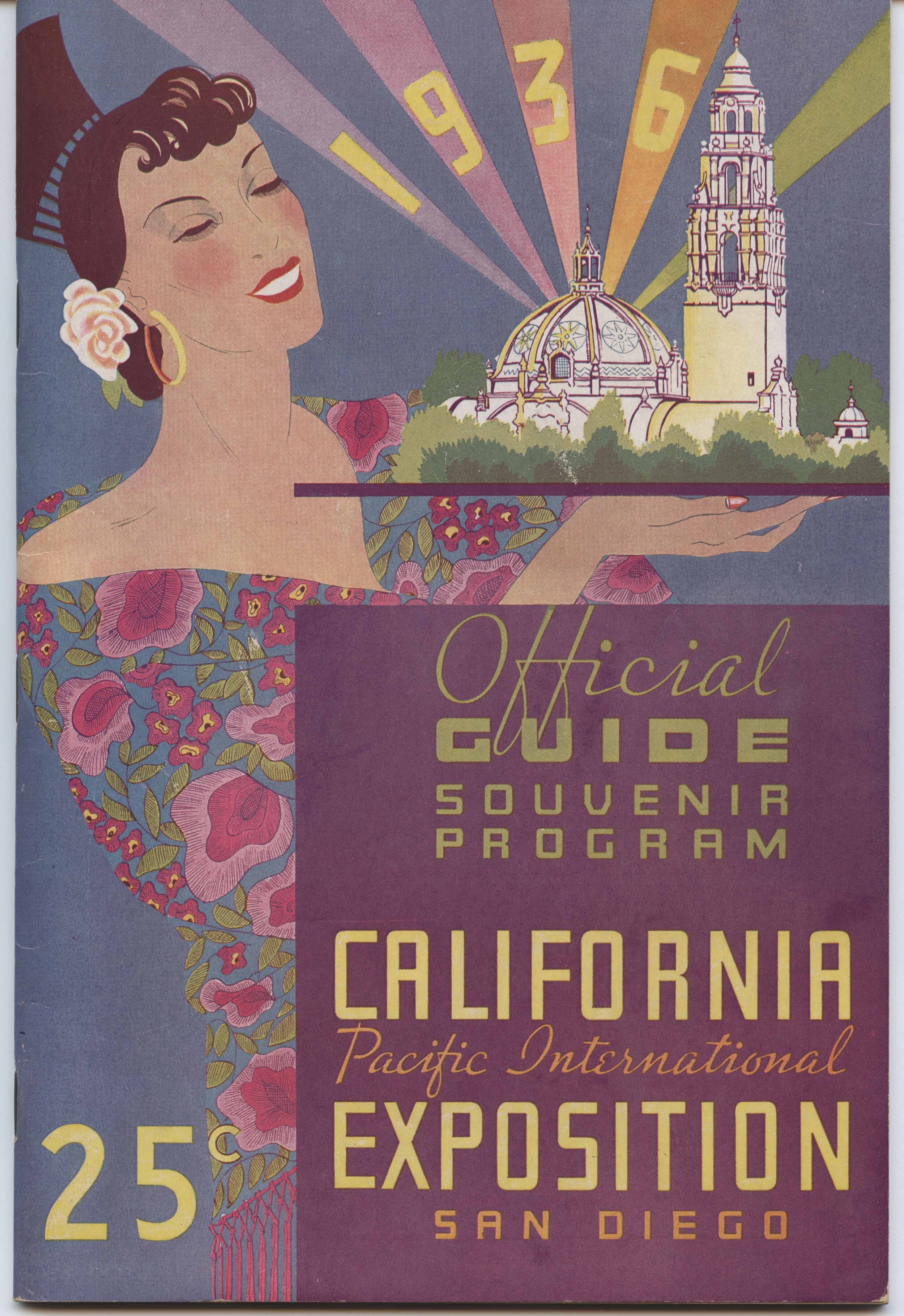

Balboa Park Centennial: The War Years - WWI/WWII
Using key military artifacts and vehicles, the second Balboa Park Centennial exhibit covered the role that Balboa Park played as a military base, a training hub, and as a support and logistics center during both World Wars. The exhibit presented intriguing insights as to why Balboa Park’s exposition infrastructure was so uniquely suited to the needs of the United States Army, Navy, and Marine Corps. As the war effort increased, Balboa Park transformed from a cultural hub into a self-contained military base. All non-military entities were ordered to leave the park grounds as even the park’s lily pond was made deeper to be used in training thousands of new recruits in rowing and swimming. The site was also used for the physical recovery of service members who had been injured in combat. The exhibit invited the public to discover the area’s rich wartime history, covering over twenty different bases throughout San Diego and uncovering just how instrumental Balboa Park and all of San Diego were on the success of U.S. forces during both of the World Wars.














Balboa Park Centennial: Post War Years - Wings ‘N’ Fins
The Post War era in the United States was a time of great optimism and hope. This was particularly apparent in automotive design, as many cars of the time continue to captivate us with both their striking elegance and stunning beauty. Many of these designs took their cues both from advances in modern technology and from trending cultural phenomena. The iconic “fin” design was no exception. The origin of automotive fins began with the design for the 1948 Cadillac. Drawing inspiration from the twin tails of the legendary P-38 Lightning fighter aircraft, the car’s designer, Harley Earl pioneered a new era in automotive design. Initial designs started off with smaller, more modest accents before evolving into a piercing, magnificent fin with embedded tail lights. Some cars had tail lights resembling flames spit from a jet engine. Others held more curves to imitate the remarkable plume of a space rocket.
The fin era also saw the entrance of many legendary women into the world of automotive design. With the expertise of designers such as Jane Van Alstyne, Dagmar Arnold, Gere Kavenaugh, Marjorie Ford, Ruth Glennie, Jan Krebbs, Jeanette Linder, Sandra Longyear, Helene Rother, Peggy Sauer and Suzanne Vanderbilt, there was an explosion in the world of interior automotive design. Automobile manufacturers began to invest in creating groundbreaking new designs, bringing a staggering number of options to their consumers. Options ranged from sumptuous complementary color schemes to on-board record players to matching sets of luggage. In the automotive landscape of postwar America, luxury, technology, and convenience reigned supreme.
Lowriders: The Art of Low & Slow. A Global Phenomenon.
Originating in the Mexican-American barrios, lowriding is a cultural phenomenon that now thrives in communities across the globe. With more emphasis on style and attitude than on performance and speed, a low, slow ride just guarantees you and your car more time in the spotlight. Often sporting smaller, narrower tires underneath lowered rear ends, Angelino lowriders distinguished themselves from the popular “California Rake” styling of hot rods at the time. Across the globe, a universal sense of belonging, community, family, nonconformity, and exquisite artisanship remain inherent values in the lowrider community. By inviting the public to revel in a shimmering collage of beautiful lowriding craftsmanship, I hoped to give everyone a warm welcome into the lowrider way of life.
Media coverage of Lowrider Exhibit
Rat Rods: Diamonds in the Rust
Defined by Rat Rod Magazine as “Blue Collar Hot Rods,” these wicked rides are like no other. Featuring raw edges and apocalyptic patinas, rat rods represent an entire arena of automotive counterculture characterized by the acceptance, or even worship, of creeping rust and decay. The award-winning exhibit, as featured in Rat Rod Magazine and Jay Leno’s Garage, featured a dazzling range of vehicles and other works of art, with serrated exhausts, skull shifters, and the gleeful repurposing of parts as far as the eye could see. A rat rodder takes pride in resurrecting and breathing fire into that which has been relegated to rot and left to die under the trees. The result: a beautiful, mischievous work of rolling art destined to be daily driven and designed never to see the underside of a tarp again. As any good rat rodder would tell you: In Rust We Trust.
International Media Coverage of Rat Rods
Zeji from a news affiliate in Mexico featured the Rat Rod Exhibit for his viewers in 2018.
Steampunk with a Retro Twist!
Generally defined as a subgenre of speculative fiction, Steampunk is an arena of science fiction and fantasy which draws strongly from early industrial technology from the Victorian and Edwardian eras. Revolutionary works in the genre include those of Jules Verne and H.G. Wells. Marvels of the Steampunk genre include works of fashion, design, art, music, vehicle creations, literature, and much more. At its core, Steampunk remains a stunning, often whimsical view of the future through the lens of the past.
Never a genre to rest on its laurels, Steampunk is constantly evolving. ‘Retro’ Steampunk incorporated more modern elements into its bag of tricks. This exhibit included many artifacts, items, and forward-looking vehicles that held deep Steampunk roots, but with some fresh, thought-provoking visions of the future added into the mix. Also featured were rare, 1st Edition Jules Verne novels, original works of historical fiction, found-object robot sculptures, gilded creations, and several original artworks and renderings by steampunk artists. There was even a time machine on display!
No Roads Required
The history of off-roading goes back to the very beginning of automobile and motorcycle design as, technically, there were no paved roads. Beginning at the turn of the 20th Century, vehicles known as “High Wheelers” emerged, often being used for the rougher terrain and heavily rutted dirt roads which would prove impassable for a smaller-wheeled car. As the world was plunged into two world wars, durable off-road vehicles became a tactical necessity. Tank tracks were married to motorcycles and the world witnessed the birth of one of the most iconic off-road vehicles ever: the Willys Jeep. Since then, off-roading has exploded into an entire kingdom of automotive culture, with sectors such as rock crawling, mud bogging, overlanding, dune-bashing, and dirt biking attracting millions of off-road enthusiasts from across the globe. Featuring examples from all facets of the off-road scene, this exhibit celebrated the adventurous spirit that compels the off-roader to take their love of the automobile into the great outdoors.
Japanese Steel
When bringing to mind the image of the “classic car,” many might imagine an American muscle car or a sleek, European cabriolet born of the 20th century. However, it would be doing a great disservice to one’s imagination to omit another lineage of classics: Japanese Steel. In this exhibit, I invited the public to peer into the fascinating history of Japan’s automotive legacy. Like most other automotive manufacturers, the Japanese vehicle market emerged during the 1910s. Then, in the 1950s, Japanese motors made their entrance into US markets with vehicles like the Toyota Crown. Since then, Japanese manufacturers have graced the world with performance legends such as the Toyota GT2000, and the Datsun 240Z. They introduced markets to the beloved and fuel-efficient Toyota Corolla, Honda N600, and Honda Civic. And, of course, Japanese manufacturers have introduced the world to the unforgettable “Kei” car phenomenon. Poised throughout the exhibit were stunning examples of Japanese artistry and design, such as the iconic FJ45 off-road vehicle, the Acura NSX, and the sleek Isuzu 117.
That ‘70s Car Show
The 1970s were the stage for a tide of cultural and technological revolutions that swept across the globe. Changes and turmoil experienced during Watergate, the Civil and Equal Rights Movements, the end of the Vietnam War and crises in the Middle East began to churn the world stage towards a dramatic new era. The advent of microprocessors, personal computers, e-mail, and video games revolutionized consumer electronics. Inflation was rising, and a world-wide recession took its toll.
The automotive industry was no island in this ocean of change. In 1970, the average car cost $4,000. By the end of the decade, it had risen to $6,000. The price of gas leapt from just 36 cents a gallon to over a dollar. The push for fuel efficient cars and decreased pollution, coupled with the shortages brought by the World Oil Crisis, permanently changed the automobile and its manufacturing processes. Imports dominated the market, and American manufacturers were forced to adapt to keep up with the changing market.
In addition to some of the many iconic vehicles of the era, we also procured a tantalizing array of familiar artifacts, including everything from platform shoes to Viewmaster toys. Displays highlighted brightly-colored floppy disks aside some of the earliest personal computers, including a Radio Shack TRS-80 and an original Apple II. To further illustrate the birth of modern computing, We even had a 1970s mainframe with a tape drive! Jamming through speakers were tracks from iconic disco, funk, and rock albums of the time, alongside displays holding original play bills for Jimi Hendrix and Steppenwolf concerts. Visitors were invited to take a trip down memory lane and to get down with the groove of the 1970’s: a decade of change.
Media Coverage for various exhibits
See below for news coverage on various museum exhibits, including: 3 Decades in the Rearview, A 30th Anniversary exhibit.
Media Coverage on ICONS: Vehicles that drove our imagination
Media Coverage on That 70s Car Show (Video link)
Reliving the ‘70s and how the ‘70s changed the automotive world.
Media Coverage on Vision vs. Reality
It all starts with a sketch before being forged in the fires of design, engineering, financing and finally, production.
























